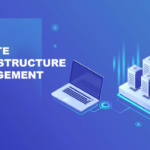The IT infrastructure of businesses of every size plays a crucial role in today’s fast-paced, technology-driven world to ensure they run efficiently and effectively. With the increasing complexity of IT systems and the rise of remote work, managing and maintaining an organization’s infrastructure has become more challenging than ever. It is here that Remote Infrastructure Management (RIM) services come into play.
What is Remote Infrastructure Management?
Remote Infrastructure Management is the process of monitoring and managing an organization’s IT infrastructure from a remote location. This includes managing servers, networks, databases, applications, and security systems. RIM services help businesses ensure that their IT systems are running smoothly and securely, without the need for an in-house IT team to be physically present on-site.
Benefits of Remote Infrastructure Management Services
Here are the Key Benefits of Remote Infrastructure Management (RIM) Services for businesses:
Cost Savings
One of the biggest advantages of using Remote Infrastructure Management services is cost savings. By outsourcing the management of their IT infrastructure to a third-party provider, businesses can reduce the need for expensive in-house IT resources and infrastructure. This can lead to significant cost savings in terms of salaries, training, and infrastructure maintenance.
Increased Efficiency
RIM services can help businesses improve the efficiency of their IT operations. Remote monitoring and management tools allow IT professionals to identify and fix issues before they escalate, minimizing downtime and ensuring that systems are running at peak performance. This can result in increased productivity and smoother business operations.
Enhanced Security
Due to the growing number of cyber threats and data breaches, businesses should prioritize security when it comes to their businesses. RIM services can help organizations strengthen their security posture by implementing robust security measures, such as firewalls, intrusion detection systems, and encryption techniques. This can help businesses protect sensitive data and mitigate the risk of cyber-attacks.
Scalability
As businesses grow and evolve, their IT infrastructure needs will also change. RIM services offer scalability and flexibility, allowing businesses to easily expand or scale back their IT resources as needed. This can help businesses adapt to changing market conditions and customer demand without incurring significant costs or disruptions.
Choosing the Right RIM Service Provider
When selecting a Remote Infrastructure Management service provider, businesses should consider the following factors:
- Experience and Expertise: Look for a provider with a proven track record of offering RIM services to businesses in your industry.
- Reliability and Availability: Ensure that the provider offers 24/7 monitoring and support to quickly address any IT issues that may arise.
- Security Measures: Verify that the provider follows the industry’s best practices and compliance standards to protect your data and systems.
- Cost-Effectiveness: Compare pricing plans and service offerings to find a provider that aligns with your budget and requirements.
Conclusion:
Remote infrastructure management services play a crucial role in helping businesses ensure that their IT infrastructure is secure, reliable, and efficient. By outsourcing the management of IT infrastructure to a remote service provider, businesses can benefit from cost savings, improved efficiency, enhanced security, scalability, and 24/7 monitoring and support. In today’s digital age, investing in RIM services is essential for businesses looking to stay ahead of the competition and drive continued growth and success.

